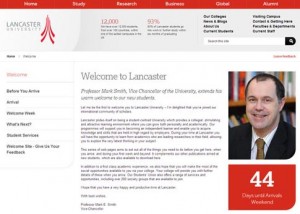I invited Steve O’Brian to write a post about onboarding. We know that keeping employees beyond that first year can be difficult—and losing them is expensive—so getting them up to speed, enthusiastic and embedded in your corporate culture is vital. But how to do it?
4 Strategies for Effective Onboarding

Everyone has the same vision of perfect employee onboarding. Your new hires get up to speed quickly. They embrace (and yes, evangelize!) your corporate culture. Above all, these new employees are motivated and contributing to the bottom line.
Sound perfect? It could be. Simple to achieve? That’s something else. The reality is that often, successfully onboarding new hires for long term happiness and productivity can be challenging. Consider:
- A full third of external hires are no longer with the organization after two years
- Almost a third of employees employed in their current job for less than six months are already job searching1
A few days of orientation is not sufficient to adequately engage new hires and get them off to a fast start. But how do you get there? The solution: “continual, reinforced learning environments.” (Bersin2) By helping employees learn over time and apply what they learn on the job, your onboarding program will drive the golden benefits of new employee engagement, productivity, and retention.
Here are 4 strategies with examples to get your onboarding program productive now.
Extend the learning window
After the initial orientation, true corporate learning happens in small chunks, over time. This type of learning is “relational,” and includes concepts like on-the-job training, role relevance to the organization, in-house networking, and performance expectations.
Studies suggest you extend onboarding programs for at least six months to achieve effective learning saturation. Also keep in mind that beyond speed to competency, employees are still in the process of “buying in.” In fact, 90% of employees are still deciding whether they’ll stay at an organization throughout their first six months.3
By extending your onboarding program past six months to a year or more, your learners will:
- Understand and retain learning better with data learned in small bites over time.
- Improve performance. Employees better understand the job and the organization while achieving productivity faster.
- Have higher retention rates from continual learning, which keeps employees engaged and interested.
Incorporate Learning Through Others
Adding a personalized, 1:1 approach to your extended onboarding program greatly improves learning retention, since this is how we, as people, naturally want to learn. Some of the benefits you can expect to see through collaborative, in-person learning are:
- Better data retention with the “show me” vs. “tell me” approach.
- Increased employee engagement. Being face-to-face with someone demands attentive listening and feedback, resulting in a more productive learning experience.
- Ability to understand the “soft” learnings of a job, such as the company culture or weight of departmental priorities.
- An understanding of the “insider tips” everyone needs to do their job. Who’s your go-to person in accounting to get something approved? What managers should be kept in – or maybe out – of the loop?
A good example is Medline.4 Medline is a medical device manufacturer with a large worldwide sales force. Medical equipment can be a complex, technical sale, and so Medline ensures all new sales reps are well trained over the course of an entire year. Their onboarding program blends periodic classroom learning with 1:1 field training experience to ensure deep, technical learning is achieved.
Guide the Learning
Extending the onboarding training process and including individualized on-the-job learning is great. But how can you keep this phase of less formal training focused and productive? In a word: structure.
Just like classroom learning, it’s important to provide a structure for any extended informal or hands-on learning. Creating a guided workflow for the entire length of your onboarding program ensures that learning is continuous and productive, speeding your new hire time-to-productivity.
Providing structure for informal learning can be easy – even a simple checklist will do. Guided onboarding plans should provide:
- Specific milestones and tasks.
- On-demand training articles or videos at key junctures.
- Check-ins and assessments to gauge progress.
- A definitive end point to the program to help employees focus on reaching their goals.
Guided onboarding plans should be specific to job functions such as marketing or operations. Over time, you can build a small library of onboarding plans for easy deployment for the next crop of new hires. In Medline’s case, they’ve built out 11 different learning plans for their technical field sales force, which are used in North America, South America, and Europe.
Measure Impact, Iterate, and Scale
Results are fairly easy to calculate once you focus on tracking these metrics at two levels: the program level and the employee level.
At the program level, build metrics around defined business objectives, such as before and after new employee attrition rates or program completion rates. For individuals, to understand the impact your extended new employee onboarding program, surveys are handy. Onboarding software can often help you measure program performance and gather participant feedback.
With results in hand, assess your program and make improvements. Then, standardize your program for repeatability across departments. Research from Aberdeen shows that organizations with a standardized onboarding process saw:
- 13% higher rates of new hire performance goals met
- 19% higher new hire engagement
- 19% higher new hire retention5
Conclusion
Everyone has an onboarding program. Make yours more effective by extending the time window, adding 1:1 experiential learning, providing guided learning plans for the entire extended process, and measuring/analyzing your entire program. Following this guide, it should be fairly easy now to scale your strategic onboarding program across your organization to achieve a uniform, effective new hire experience.
—
References
1 Stein & Christian, 2010.
2 Bersin, “The Corporate Learning Factbook,” 2012
3 Partnership for Public Service, Getting On Board: A Model for Integrating and Engaging New Employees,” 2008
4 Medline Onboarding Program Case Study, Chronus Corporation, 2014.
5 Aberdeen Group, “Onboarding 2011, the Path to Productivity,” March 2011.
—
Thank you Steve!
Steve O’Brian, Vice President of Chronus Corp, is an accomplished author and speaker on the subject of corporate mentoring, coaching, and onboarding. His thought leadership has been instrumental in changing the way companies approach talent development programs. Deeply involved in the creation of client solutions, O’Brian shares his best-practice program expertise throughout the corporate learning and development world.
Chronus Corporation is a global provider of software to run talent development programs including employee onboarding, mentoring, and coaching.
Lucy is Editor at Corporate Eye


